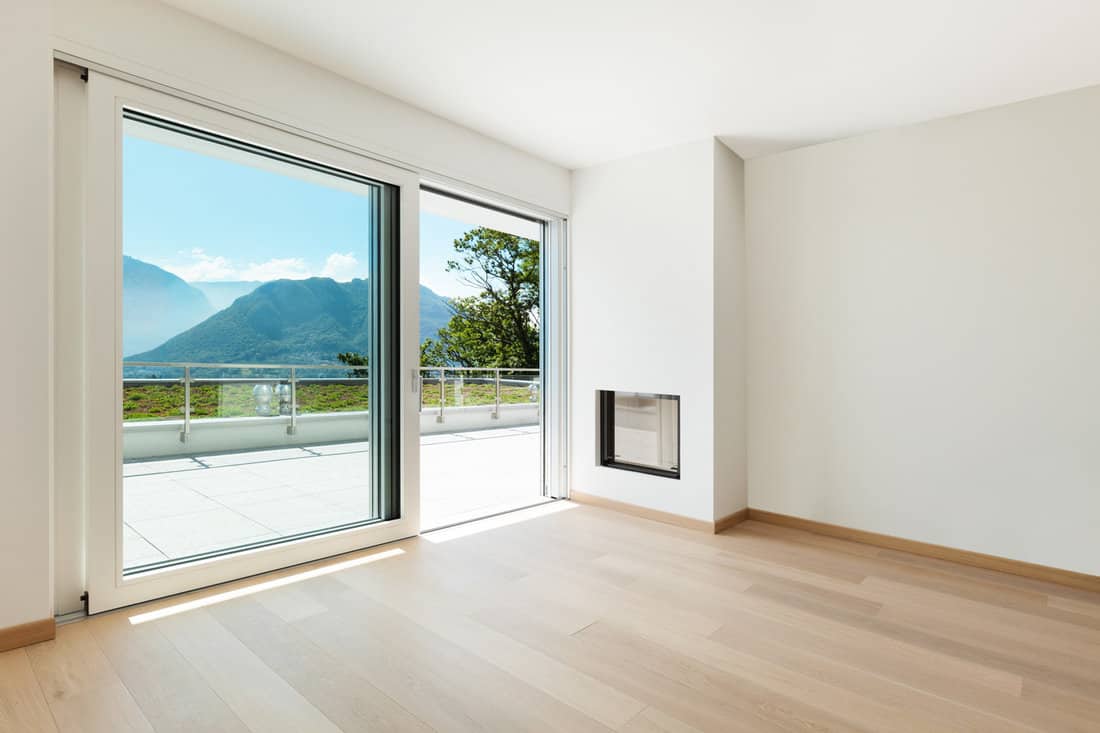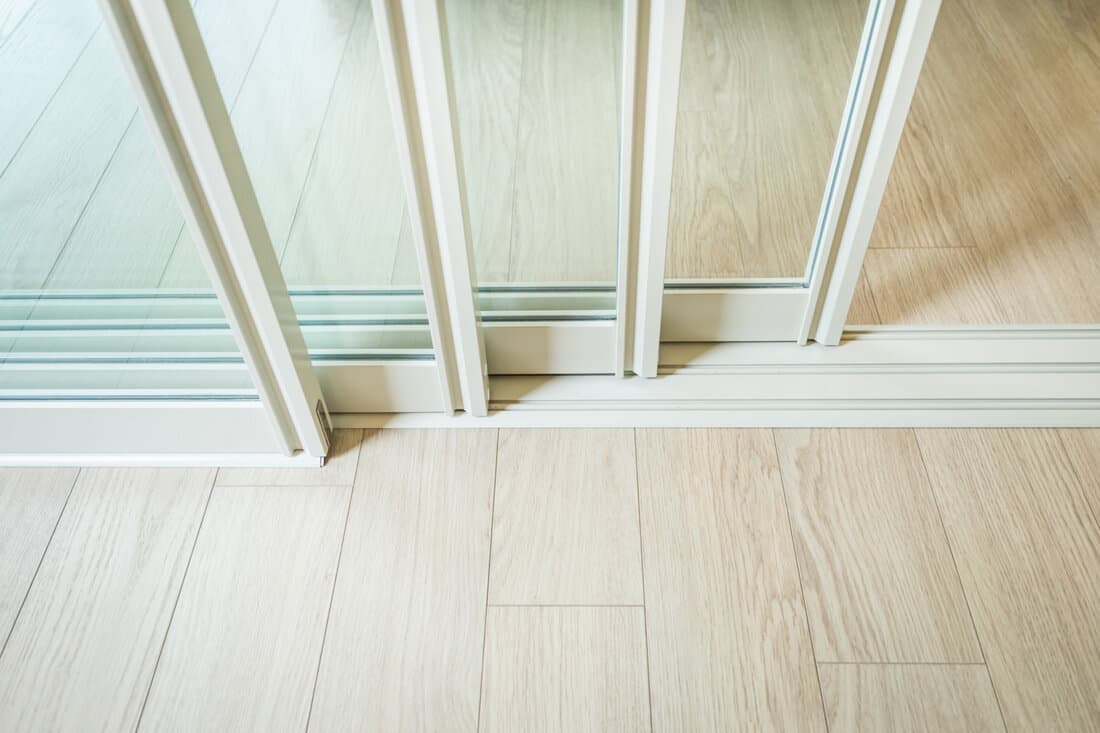Sliding doors bring light into your home, provide a sense of spaciousness, and allow easy access to external areas. However, having such an entrance into a home increases the likelihood of water infiltration. Weep holes are utilized for draining water, and if you are wondering about the placement of weep holes in your sliding door, you've come to the right place. We've thoroughly researched this topic and found the best information for you.
Weep holes allow water to escape. They are usually placed at the bottom front of a track and at a height where water occasionally collects below the holes. If there's any debris present in your weep holes, clean them immediately because water cannot promptly drain when there is an obstruction.
Sliding doors are one of the leading causes of water damage in residential properties. In this post, we will discuss how weep holes work, what to do when your weep holes are clogged, and the causes of leaks in your sliding door. Please keep reading to learn how to recognize common problems and what to do about them.

How Do Weep Holes Work?

We sometimes add affiliate links and content that was curated and created by our team with the help of advanced ai tools to help showcase the best design styles.
The function of a weep hole is to allow water to escape—one on each side of the observation point. The water must perform a 90-degree turn.
However, weep holes are not perfect. Occasionally, there is so much water from intense rainfall that the weep holes cannot handle.
Where Are The Weep Holes On Sliding Glass Doors?

It is normal for water to accumulate in the track of sliding glass doors during a storm, particularly a windy one. Because of this many of these doors have weep holes.
These weep holes are usually located at the lowest position at the front of our track. They allow any water that strikes the glass and spills onto the track to drain through the apertures.
Water will enter the home through the bottom, but it will not reach the floor unless the weep holes are obstructed. Examine your external weep holes for dirt or debris and clean them as needed. When water does not promptly drain, it might enter through the sliding door.
The presence of water can cause mold. The weep holes are purposefully placed at the bottom of the sliding door and at a height where water occasionally collects below the holes to allow water to escape.
How Do You Clean Clogged Weep Holes In Sliding Doors?

Weep holes are small openings intended to drain water from the track when rain cascades down the glass. They are drilled into the frame at either end of the door's track.
Wet grout surrounding the drain indicates that it may obstruct the weep holes. If this occurs, water will have nowhere to drain and begin to flow into your home, causing damage.
In regions where heavy precipitation is typical, this problem can occur frequently. Another issue with weep holes is that it serves as entry points for rodents, insects, and other small creatures.
Clear the entrance with a pipe cleaner, toothpick, or stiff wire to clean the weep holes. This will remove any obstructions and allow the water to flow freely. After cleaning the weeps, flush water through them to remove any remaining dirt or debris, and then dry the area with a towel.
If this has no effect, drilling a few additional weep holes may be beneficial to increase the flow options. You should also clean the track. Once the track has been well cleaned, pour a minor pitcher of water across it and observe as it migrates to the weep holes and trickles outside.
The tracks should be maintained and cleaned weekly to ensure the optimal operation of the sliding doors and that debris is not accumulating and impeding the system's intended drainage. One might use a vacuum or other suction device to clean tracks.
It is essential to frequently inspect your sliding doors for dirt and remove it to avoid drainage issues. Additionally, you should clean the wheels often.
Older railroad tracks without weep holes may require drilling. They need not be larger than half of a pencil's diameter. Also, many residents resort to sealing weep holes with various materials, including silicon sealants and rolled-up paper.
Click here to see this Black+Decker handheld vacuum on Amazon.
Why Do Sliding Glass Doors Leak?

Following the installation of a sliding glass door, the homeowner may notice water in the base track, which may appear to cause alarm. Leaking sliding glass doors are problematic for homeowners because they signal a damaged or broken seal.
Many sliding doors have protection from misdirected precipitation. But, even if your door is placed correctly, the rain will inevitably enter the track.
Weep holes are little slats that allow water to drain from the track base. However, water will sure enter your home if the water entering the tracks is larger than the water draining out through the drainage holes in the base track. This is particularly frequent in regions with higher precipitation or countries with extreme weather.
Also, debris may impede the weep holes from draining water and prevent the doors from closing properly. Improper sealing around the gate may also lead to leaks which will seep into your home and corrode your floors.
Leaks can also result from your sliding door not fitting its frame. Always choose professionals to install sliding doors to ensure each door fits appropriately.
Are Weep Holes Necessary?
The sliding glass door is favored by homeowners who appreciate stunning views. They're fantastic for various reasons, although they occasionally have water infiltration issues.
Weep holes in your sliding doors aid in the drainage of water from the track and prevent its accumulation. Therefore, weep holes are necessary.
Without weep holes, water will enter your house, which can cause mold and costly structural problems.
What Happens If You Cover Weep Holes?

If you are unsure of the purpose of weep holes, your initial reaction may be to cover them. You shouldn't cover weep holes because this may lead to leaking.
Others may cover weep holes to prevent pest infestation, but this is inappropriate. Even now, the perforations remain essential for air ventilation and water drainage.
But, you may cover the track for any damages using caulk. Place the caulk tube's tip against the upper corner of the frame and along the entire side of the sliding glass door.
Click here to see this Gorilla waterproof caulk & seal on Amazon.
Is WD-40 Suitable For Sliding Doors?
It's time to clean the sliding door if you notice yourself pulling a little harder on it or if it creates noise when opening and closing. Applying WD-40 grease spray along the hinge, tracks, and wheels of the different door segments might be helpful since it makes movement more manageable and keeps the joints clean. This simple-to-use penetrating oil can aid in lubricating and unsticking corroded, rusted, and jammed door tracks.
WD-40 is a dense, quick-acting compound that provides long-lasting lubrication. It dries quickly and leaves a transparent, non-staining film, deterring the attraction of dirt. WD-40 resists oxidation, significantly improves any surface's ability to slide, and is waterproof.
Use a spray and squirt a lot of it on the track location and corners of the sliding door. Open and close your sliding door several times while using lubricant to ensure smooth operation.
Take a clean rag and wipe off any extra cleaner from the door once you have finished cleaning and greasing it. Indeed, WD-40 is frequently suggested for sliding doors.
You can use WD-40 for both metal and non-metal surfaces. Although you can use WD-40 on various surfaces, including metal, rubber, and plastic, you should take care because it may deteriorate wood.
Click here to see this WD-40 lubricant on Amazon.
In Closing
Sliding doors are a lovely addition to a home but are sometimes points of water infiltration. Standing water can cause harm to the frame and the surrounding environment.
There are numerous reasons your sliding glass door may leak water. If you continue to notice water penetration after performing essential maintenance for your sliding glass doors, they may not have been installed correctly. You can reduce the danger and keep your home dry if you are cautious and vigilant.
If you struggle to manage water intrusion issues in your home, the best course of action is to have a professional evaluate your doors. They will be able to swiftly identify the problem and provide you with the long-term solution you need for moisture prevention.
We hope you found the answers to your questions about weep holes. If you feel inspired, check out these other related posts:
Do Casement Windows Have Weep Holes?
Do Sliding Doors Need A Bottom Track? [Or Can You Suspend Them?]




Hello!
I have a brand new build. We had sliding glass doors installed and during a storm (winds 30mph with heavy rain) we had water enter under the stationary door (at the bottom) into our home in the track.
I had the builder come by to check if the doors were installed properly and they assured me they were.
We have also checked and the weep holes aren’t clogged and the track was free of debris.
My question after further looking at the doors is, should there be weep holes on both the top AND bottom of the sliding glass doors?
Thank you,
Nikki